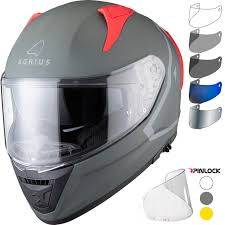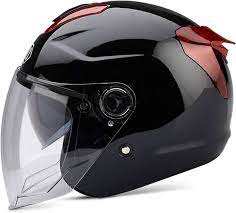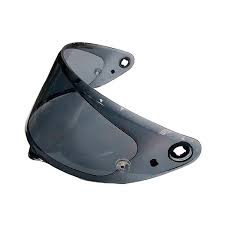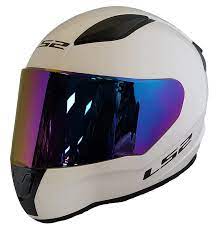Enhancing Safety and Clarity: The Motorcycle Helmet Pinlock Advantage

The Importance of Motorcycle Helmet Pinlock: Ensuring Clear Vision and Safety
When it comes to riding a motorcycle, safety should always be a top priority. One essential piece of safety equipment that every rider should invest in is a motorcycle helmet. However, simply having a helmet is not enough; ensuring clear vision while riding is equally crucial. This is where the motorcycle helmet Pinlock comes into play.
The Pinlock system is a revolutionary technology designed to prevent visor fogging, which can significantly impair a rider’s vision and compromise their safety on the road. Fogging occurs when there is a stark difference in temperature between the inside and outside of the helmet, causing condensation to form on the visor.
By incorporating a Pinlock insert into the visor, riders can effectively eliminate fogging issues. The Pinlock insert acts as a barrier between the warm air inside the helmet and the cold air outside, preventing condensation from forming and ensuring clear visibility at all times.
Not only does the Pinlock system enhance safety by providing clear vision in various weather conditions, but it also improves overall comfort for riders. With a fog-free visor, riders can focus on the road ahead without constantly having to adjust their helmet or wipe away condensation.
Installing a Pinlock insert is quick and easy, making it a convenient solution for riders looking to enhance their riding experience. Most modern helmets are compatible with Pinlock inserts, allowing riders to upgrade their existing helmets with this innovative technology.
Whether you are commuting in urban areas or embarking on long-distance journeys, having a clear view of the road ahead is essential for safe riding. The motorcycle helmet Pinlock offers riders peace of mind knowing that they can maintain optimal visibility regardless of external conditions.
Investing in a Pinlock system is not just about enhancing your riding experience; it’s about prioritising your safety on the road. By equipping your helmet with this advanced technology, you can ride confidently knowing that your vision will always be clear and unobstructed.
Don’t let foggy visors compromise your safety and enjoyment while riding. Upgrade to a motorcycle helmet with Pinlock technology today and experience the difference it makes in ensuring clear vision and enhanced safety on every ride.
Eight Essential Tips for Maintaining Your Motorcycle Helmet’s Pinlock System
- Ensure the pinlock is properly installed in the helmet visor.
- Clean the pinlock regularly to maintain visibility.
- Adjust the pinlock pins for a snug fit on the visor.
- Replace the pinlock if it becomes scratched or damaged.
- Avoid touching the inner side of the pinlock to prevent fingerprints and smudges.
- Use anti-fog spray in conjunction with the pinlock for enhanced fog resistance.
- Check for any loose screws or parts on the pinlock mechanism periodically.
- Store your helmet with the pinlock installed to preserve its shape and effectiveness.
Ensure the pinlock is properly installed in the helmet visor.
To maximise the effectiveness of your motorcycle helmet Pinlock system, it is crucial to ensure that the Pinlock insert is properly installed in the helmet visor. A correctly installed Pinlock insert forms a tight seal, creating a barrier against fogging and maintaining clear visibility while riding. Take the time to carefully follow the manufacturer’s instructions when installing the Pinlock insert to guarantee a secure fit and optimal performance. By ensuring that the Pinlock is correctly positioned in the visor, you can enjoy a fog-free riding experience and enhance your safety on the road.
Clean the pinlock regularly to maintain visibility.
To ensure optimal visibility while riding, it is important to clean the Pinlock insert on your motorcycle helmet regularly. Over time, dust, dirt, and debris can accumulate on the Pinlock, affecting its effectiveness in preventing fogging. By cleaning the Pinlock regularly with a gentle cleaner and soft cloth, you can maintain clear visibility and ensure that this essential safety feature functions properly when you need it most. Regular maintenance of the Pinlock insert will not only enhance your riding experience but also contribute to your overall safety on the road.
Adjust the pinlock pins for a snug fit on the visor.
When using a motorcycle helmet Pinlock system, it is essential to adjust the Pinlock pins for a snug fit on the visor. Properly adjusting the pins ensures that the Pinlock insert sits securely in place, creating an effective barrier against fogging. A snug fit not only maximises the performance of the Pinlock system but also prevents any potential gaps that could compromise visibility. By taking the time to adjust the pins correctly, riders can enjoy clear vision and enhanced safety while out on the road, regardless of weather conditions.
Replace the pinlock if it becomes scratched or damaged.
It is crucial to replace the Pinlock insert on your motorcycle helmet if it becomes scratched or damaged. A scratched or damaged Pinlock can compromise its effectiveness in preventing visor fogging, potentially hindering your visibility while riding. By ensuring that your Pinlock insert is in optimal condition, you can maintain clear vision and enhance safety on the road. Regularly inspecting and replacing the Pinlock when necessary is a simple yet essential step to ensure that your helmet continues to provide you with reliable protection and visibility during your rides.
Avoid touching the inner side of the pinlock to prevent fingerprints and smudges.
To maintain the effectiveness of your motorcycle helmet Pinlock, it is important to avoid touching the inner side of the insert to prevent fingerprints and smudges. By keeping the inner surface clean and free from oils or residue from your fingers, you can ensure optimal clarity and visibility while riding. Fingerprints and smudges on the Pinlock insert can obstruct your vision and compromise its anti-fogging capabilities, so it is best to handle the insert with care and avoid unnecessary contact with the inner side. This simple tip can help you make the most of your Pinlock system and enjoy a clear view of the road ahead during all your rides.
Use anti-fog spray in conjunction with the pinlock for enhanced fog resistance.
For enhanced fog resistance when using a motorcycle helmet Pinlock, consider using anti-fog spray in conjunction with the Pinlock system. Applying anti-fog spray to the inner surface of the visor can further prevent condensation buildup, ensuring clear visibility in challenging weather conditions. By combining the effectiveness of both the Pinlock insert and anti-fog spray, riders can maximise their fog-fighting capabilities and enjoy a safer and more comfortable riding experience on the road.
Check for any loose screws or parts on the pinlock mechanism periodically.
It is essential to regularly inspect your motorcycle helmet’s Pinlock mechanism for any loose screws or parts to ensure optimal functionality and safety. Over time, vibrations from riding can cause screws to loosen, potentially compromising the effectiveness of the Pinlock system. By conducting periodic checks and tightening any loose components, riders can maintain a secure and reliable Pinlock mechanism that helps prevent visor fogging and ensures clear vision on every ride.
Store your helmet with the pinlock installed to preserve its shape and effectiveness.
To preserve the shape and effectiveness of your motorcycle helmet Pinlock, it is recommended to store your helmet with the Pinlock insert installed. Keeping the Pinlock in place not only helps maintain the shape of the visor but also ensures that it remains effective in preventing fogging when you next hit the road. By storing your helmet with the Pinlock installed, you can prolong its lifespan and continue to enjoy clear visibility on every ride. Remember, proper care and maintenance of your motorcycle helmet and its accessories are essential for both safety and longevity.



